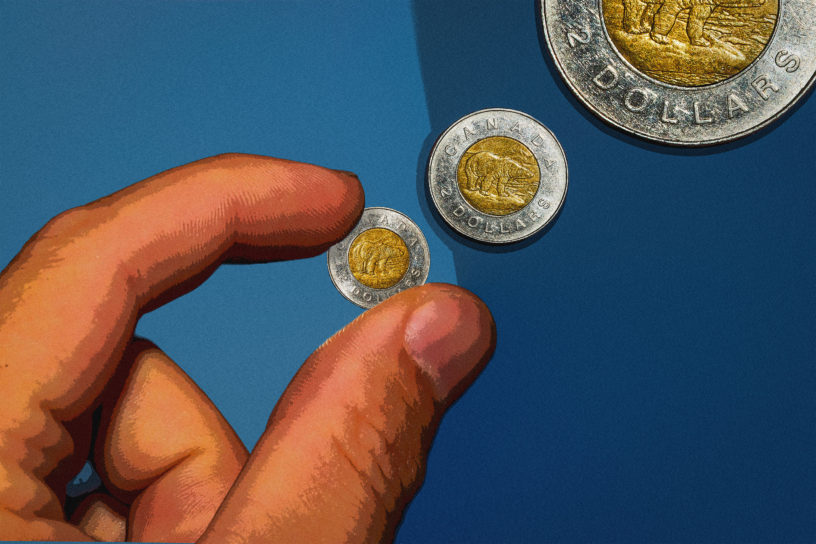By Dylan Marks
Some food manufacturers have implemented shrinkflation by cutting back on costs without raising prices, leaving university students unknowingly getting less than what they paid for in their shopping carts.
According to Edgar Dworsky, a consumer lawyer and a former Massachusetts assistant attorney general in consumer protection, shrinkflation occurs when food manufacturers decrease their product sizes without lowering prices in an attempt to increase profits.
“Instead of raising the price directly, [manufacturers] will give you a little bit less in the package and keep the price the same,” he said.
Dworsky added most consumers don’t pay attention to the net weight or the net count that are on packages, allowing manufacturers to raise prices without it being noticed.
“If you were paying $2.99 for a carton of orange juice, and now it’s $3.39 most consumers will notice,” he said. However, if manufacturers start making containers hold less, most people are less likely to catch on.
First-year computer science student at Toronto Metropolitan University (TMU), Vaishnavi Krishnamurthy said she didn’t always notice a difference in product size, though recently she’s been catching a few changes while buying groceries.
“When I go to Costco and I get bread, the size of the bread is getting smaller and smaller, but it did take me a while to notice,” said Krishnamurthy.
“If you were paying $2.99 for a carton of orange juice, and now it’s $3.39 most consumers will notice”
A study by Toronto Community Researchers found that out of 60 products examined for shrinkflation, 20 per cent had decreased in size between 2019 and 2024. This means that one in five items in students’ shopping carts is likely affected by the practice.
Dana McCauley, CEO of the Canadian Food Innovation Network, said another reason companies decrease product sizes is to maintain an even profit when negotiating costs of products with retail stores.
“[Retailers] want you to come to their store and not go to the store across the street. [They] do that by having items that the store across the street doesn’t have, or prices that are better than the store across the street,” she said.
McCauley said staying competitive is crucial, but retailers and manufacturers often disagree and negotiate on pricing. This leads manufacturers to cut wholesale prices and reduce product sizes to maintain profits—all while meeting store demands.
Although this change affects consumer value, McCauley said it’s not an easy process for customers to fight back against shrinkflation as “it’s out of the consumer’s hands.”
Along with smaller product sizes, some manufacturers are saving money by lowering the quality of products. According to the Government of Canada, “skimpflation is using less expensive, and perhaps inferior ingredients to produce or manufacture what appears to be the same product.”
“What also is happening is a lowering of the quality of ingredients. So, trading one type of oil for another or instead of having potatoes it’s potato flakes,” said Kelleen Wiseman, academic director of the Master of Food and Resource Economics program at The University of British Columbia.
According to Wiseman, the process of skimpflation is tougher to notice. Skimpflation in particular can be extra difficult to detect because consumers don’t necessarily pay attention to changes of specific ingredients. “Nobody notices that kind of detail,” she added.
“Why would I consume worse things and pay more? That should be the other way around”
Some students aren’t happy with the changes to quality and quantity made by food manufacturers.
“Why would I consume worse things and pay more? That should be the other way around,” said Anjalee Chahal, a first-year professional communications student at TMU.
Aside from manufacturers using inferior ingredients for their products, Chahal also said packaging schemes like having more air in potato chip bags is just an extra upsetting factor within the ordeal of shrinkflation.
Though conversations surrounding shrinkflation have recently become more popular, according to Dworsky, it is a problem that has been around for a long time.
“I’ve been following it since I was a teenager, which was back in the 1960s,” he said. “That’s how far it goes back.”











Leave a Reply